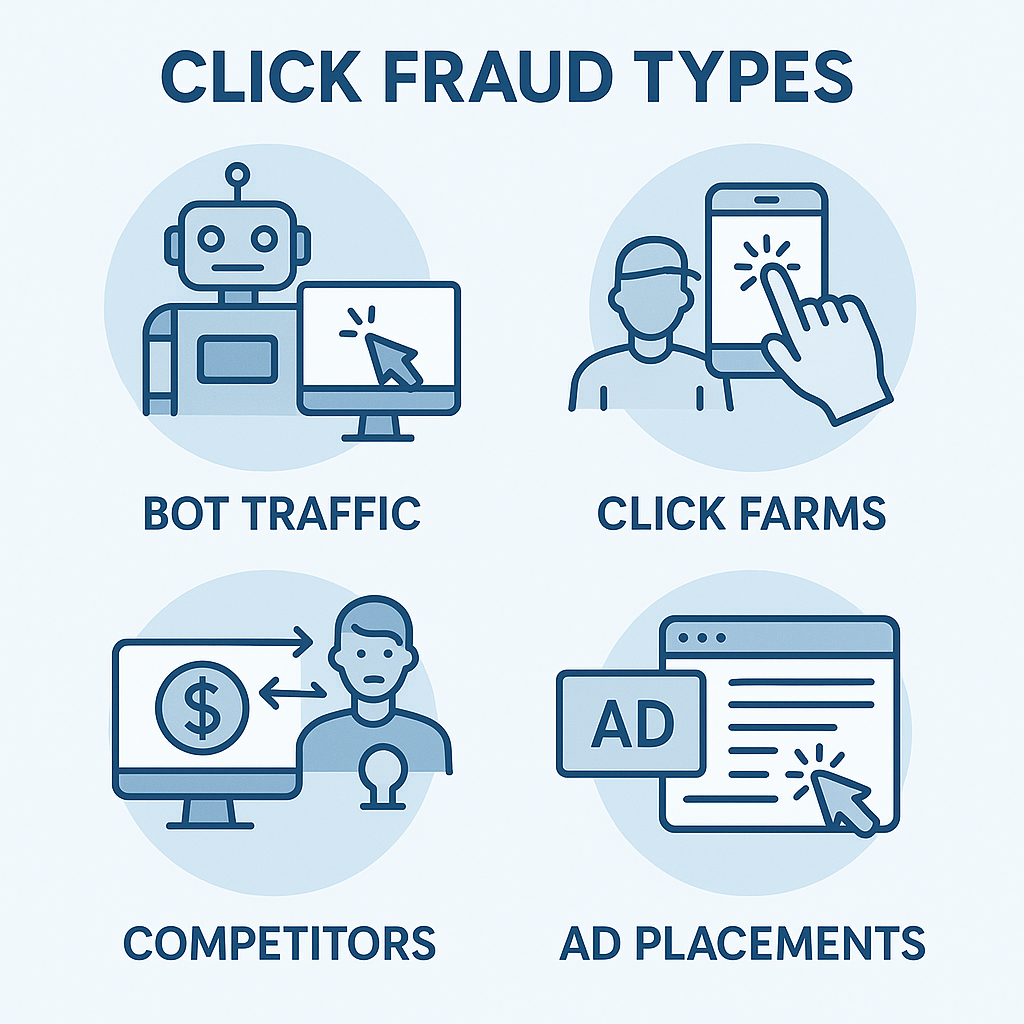Click fraud comes in many forms, each with its own methods and motivations. While some fraudsters act out of direct competition, others exploit ad networks for financial gain or simply take advantage of poor ad placements.
Here are the four most common types of click fraud:
Now, let's look at each type in more detail and how they can quietly drain your ad budget.

1. Competitor Click Fraud
Who's behind it? Your competitors.
Why do they do it? To drain your ad budget and push you out of the market.
Competitor click fraud happens when businesses or individuals intentionally click on a rival's ads to exhaust their daily budget. Once the budget runs out, the ad stops showing—giving the competitor an advantage.
-
Small businesses in highly competitive industries (like legal services, real estate, and insurance) are frequent targets.
-
Some companies use manual clicking, while others hire click farms or use automated bots to inflate fraudulent activity. Click farms are large groups of low-paid workers clicking ads to simulate real engagement—are often used to bypass fraud detection systems.
-
This tactic artificially increases CPC (cost-per-click) and makes it harder for advertisers to get a return on their investment.
2. Bot Clicks
Who's behind it? Fraudsters using automation.
Why do they do it? To simulate real traffic and steal ad spend—at scale.
Bot clicks are generated by automated programs designed to mimic human behavior. These bots can load pages, click on ads, and even simulate mouse movements and scrolls, making them difficult to detect.
-
Bots can operate 24/7, generating thousands of fake clicks in a short period.
-
Some are simple scripts, while others are part of massive botnets spread across infected devices.
-
They're often used to manipulate campaign performance metrics, burn budgets, or generate fraudulent revenue for shady publishers.
3. Click Farms
Who's behind it? Organized networks of low-paid workers
Why do they do it? To create fake engagement that looks real to ad platforms.
Click farms are groups of real people hired to click on ads, visit pages, or interact with content. Unlike bots, their human activity makes them much harder to detect
-
Click farms are commonly found in regions with low labor costs and high mobile phone usage.
-
Their clicks often go unnoticed by automated fraud detection systems, which are tuned to spot non-human behavior.
-
Some click farms are contracted by shady publishers looking to boost ad revenue or by competitors running more elaborate fraud schemes.
4. Accidental Clicks
Who's behind it? No one malicious—just bad UX or ad placement.
Why does it happen? Because users unintentionally tap on ads they didn't mean to click.
Not all click fraud is intentional. Sometimes, accidental clicks are caused by poorly placed ads, misleading formats, or tricky mobile layouts, especially on gaming or entertainment apps.
-
These clicks rarely result in conversions and waste ad budgets quickly.
-
They distort performance data, making it harder to optimize campaigns.
-
Ad networks sometimes benefit from these clicks, so they may not be motivated to prevent them entirely.
